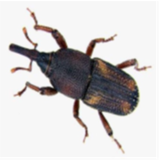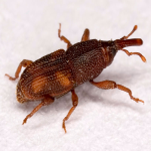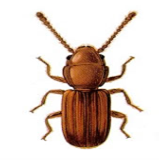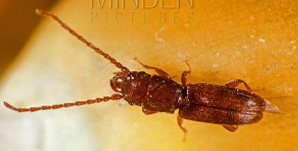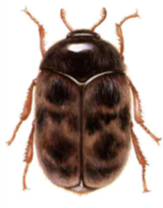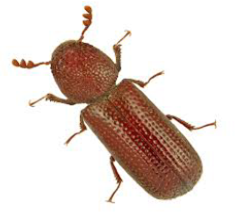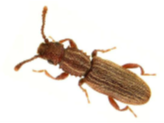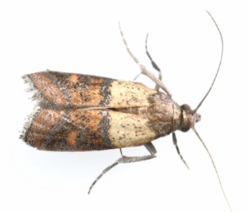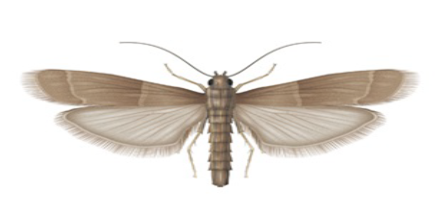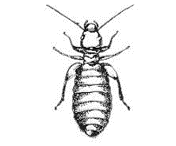Grain insects are an integral part of the grain storage system; over the ages, they have adapted fully to survive under the conditions that exist in the grain storage environment.
The environment in which an insect lives can be divided into four components:
- The prerequisites for life, namely food, water, oxygen and the atmosphere.
- The climate, in other words the temperature and humidity in the grain silo or bag stack.
- Other living organisms that live in the same environment, such as other insect pests with which the insects must compete with for feed and shelter, natural enemies such as parasites and predators, bacteria and viruses that cause diseases and fungi that grow on the grain.
- The physical conditions under which the grain is stored, for example the darkness, the size of the space within the silo bin, the impenetrability of cement, the total area of the volume of grain, the size of the grain kernels, the size of the intergranular spaces, and much more.
Each of these components of the environment influence the population growth of the pest species. The ecological approach to pest control comprises the change of one or preferably more than one of these environmental components to make the environment less suitable or totally unfit for population growth of the insect pests, but subject to the limitation that the environment must remain suitable for the storage of grain.
The most important pests of stored grain, grain products and seeds are insects and mites. Storage pests undergo a complete metamorphosis during development. While the insect is in the egg stage and pupa stage, it does not move around or eat. During the larval stage and the mature stage, the insect is very active. The larval stage is mainly focused on eating in order for the mature insect to be healthy and strong. The mature stage produces the next generation of insects. The mature insect moves around much more than the larva to look for suitable places to lay eggs. That is why the insect in the mature stage has wings.
The life cycle or metamorphosis of insects has the following characteristics:
- Nearly all insects lay eggs to reproduce.
- From the egg a young, immature insect hatches and develops into a mature insect that is ready to reproduce.
- Most of the insects develop in one of two ways from the egg stage to the mature stage.
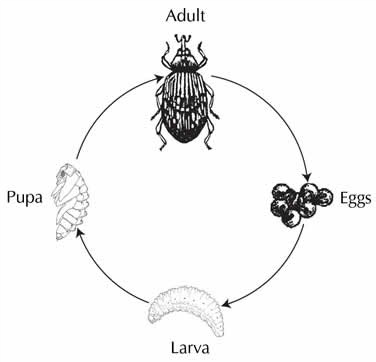
There is also a small group of insects that don’t undergo a metamorphosis during development. Most of the important pest insects of stored grain, grain products and seeds undergo a complete metamorphosis during development from egg to the mature stage and therefore they are all similar. They can, however, be divided into two groups depending on the place where the immature stages are found.
Type A: Storage Pests that Develop within the Seed Kernel
These pests cause the most damage. When grain is contaminated by this group, only the mature stage of the insect is observed, because the immature stages are hidden inside the seeds and grain.

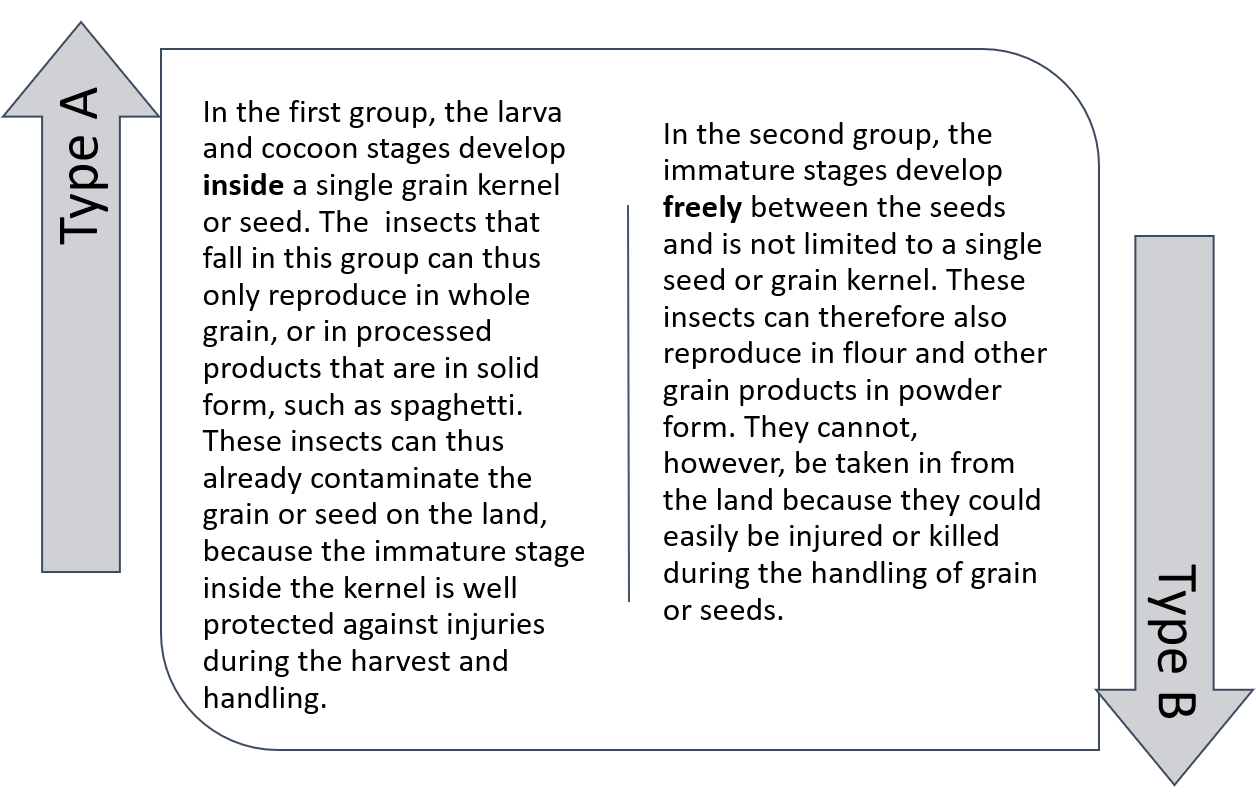
Type B: Storage Pests that Develop Freely Between the Grain
With insects that move freely between the seeds or develop in the milled grain products, both the matured insects as well as the larva, is noticed. Indeed, with the type where the lifespan of the mature stage is shorter than the development stage of the larva, the larval stage is as visible or even more so than the mature stage. Only the body characteristics of the mature stage are mentioned here.
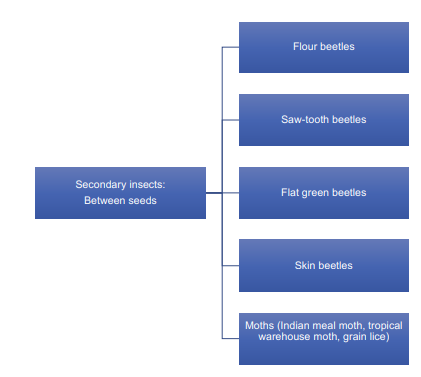
| Type A | Type B |
|
Grain Weevils The grain weevils belong to the snout-beetle family, which is characterized by the mouth piece at the end of the snout or rostrum. There are three snout-beetles that are important pests of stored grain and seeds, namely: Grainery Weevil
Maize Weevil
Rice Weevil
|
Flat Grain Beetles There are at least six different types with different scientific names, but they are so similar that there are only two common names, namely the flat grain beetle and the rusted grain beetle (the later must not be confused with the rust-red flout beetle). Flat grain beetle
Rust Red Grain Beetle
|
|
Cow-pea and Bean Weevil Although these insects are also called weevils, they are not related to the snout-beetle family to which grain weevils belong. They belong to a weevil family that almost exclusively contaminates leguminous plants such as peas and beans. Grain weevils, on the other hand, can hardly survive on leguminous plants. Cow-pea weevil
Bean weevil
|
The Skin Beetle Family A few members of the skin beetle family have adjusted to survive in stored products and they seldom, if ever, feed on food of animal origin. It includes the khapra beetle and six closely related types. Some other members of the family live from waste material such as insect skin castings, grain dust, etc. that are commonly found in storage sheds, but not in the stored product itself. Only the khapra beetle is discussed here.
|
| Type A | Type B |
|
Grain Borers The grain borers belong to the same insect family as the wood borers. Their build and lifestyle habits are very similar to that of wood borers. Only one of the two insect groups will be discussed, namely the small grain borer. Grain Borer
|
Saw-Toothed Beetle
Rust Red Flour Beetle
|
|
Moths There are three moth types that develop inside seeds, of which the Angoumois moth is the most important. The Angoumois moth belongs to the family of leaf miners that mostly tunnel into leaves. Angoumois moth
|
Moths There are 6 important moth types that attack stored products and that develop freely between the seeds. Of these, two are commonly found in South Africa, namely the: Indian Flour Moth
Tropical Warehouse Moth
|
|
Grain Lice In this group there are various types that occur in stored grain. The characteristics of the body and the biology of the different types are similar.
|

